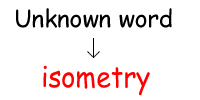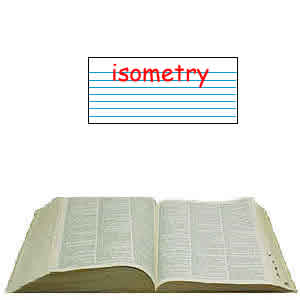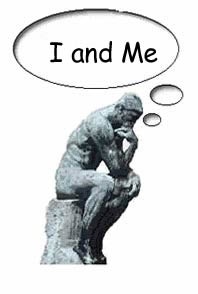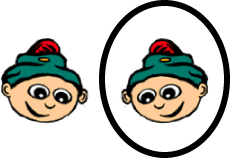|
I
dentify each unfamiliar word.
"When I read this sentence, I had trouble
understanding what isometry means."
| The reflected square
WXYZ is the isometry of square ABCD. |
|
 |
|
F
ind the definition of the word.
"When I read the words around isometry,
I still have trouble figuring out what its definition might
be. The context clues in the sentence tell me that somehow a
figure and its reflection combine to make an isometry. To help
me understand the word, I will look it up in the index of my
geometry book. The definition in my book tells me an isometry
is a transformation in which a figure and its image are equal
reflections of each other."
|
 |
|
I
solate the word.
"To help me remember the word isometry,
I will write it on the front of a note card." |
 |
|
T
ell yourself the definition of
the word.
"Isometry is a transformation in which
a figure and its image are equal reflections of each other.
I will write this definiton on the back of my note card to help
me remember." |

 |
|
F
ind a key word.
"I see the words I and me in the
word isometry. This word means equal reflections of each other
and the words I and me are also equal reflections of
the same thing." |
 |
|
I
magine an interaction.
"When I stand in front of a mirror, I'm
looking at me. I'm standing there looking at my reflection.
To help me remember the meaning of the word isometry, I will
think of a boy looking at himself in the mirror." |
 |
|
T
hink about your strategy.
"When I have to remember the definition
of the word isometry, I will think of the words I and me
and I will picture a boy looking at himself in the mirror and
seeing his reflection." |
 |
|
S
tudy the strategy.
"I will study my note card with the definiton
of isometry. I will also think of the words I and me
and the picture a boy looking at himself in a mirror." |
 |